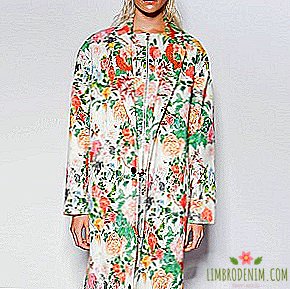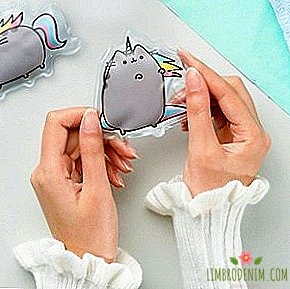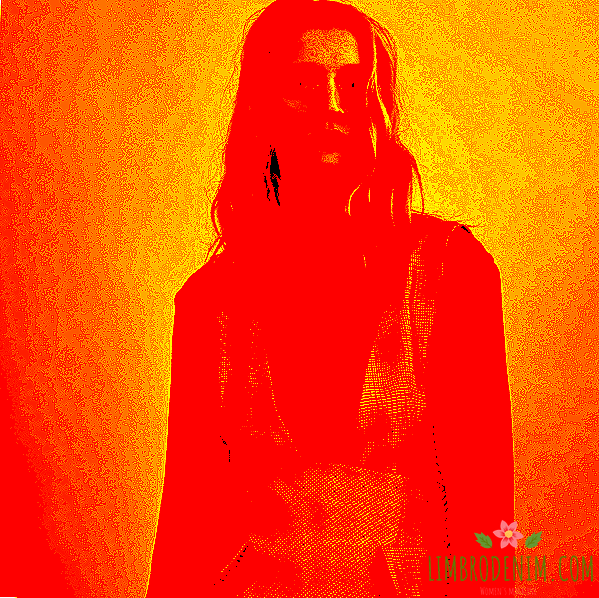Norwegian ornaments: The main pattern of winter
WE CONSIDER THE TRENDS FROM PODIUM, which can be adapted for your wardrobe for the next six months - the Russian colds are usually so much. It's time to stock up on something cozy up to the very thaw - at least sweaters and mittens, which are decorated with traditional Norwegian ornaments: zigzags, snowflakes and deer. We tell how to wear them and with what to combine.

How it all began
Historians still can not agree in opinion when the Scandinavians came up with familiar patterns - there is an opinion that they were portrayed by the Vikings. Other researchers came to the conclusion that residents who are accustomed to cold weather mastered knitting among the last in Europe only in the 17th century. In Norway, the first knit sweaters, which served as underwear and made of silk, were worn by the privileged persons; then warm models that ordinary people could allow themselves to have taken root — two hundred years later, knitting even became a compulsory subject of elementary school. For a long time, the sweaters were bicoloured, since wool was taken from black and white sheep and not dyed.
Each Scandinavian region had its own specific patterns. For example, the Norwegian Sethesdal was famous for its traditional black lusekofte sweater (literally - “sewn in jacket”) with a jacquard pattern in a small white dot. For its elegance it was complemented with red and green embroidery on the neck and cuffs, as well as with tin or silver clasps. Some ornaments worked like amulets: zigzags meant protection, and "snowflakes" (actually pointed flowers) promised luck, symbolizing the sun.


Norwegian companies built their business precisely on the fact that they produced traditional sweaters from local wool. For example, the Norlender brand was founded by a family of farmers who started their production from a single spinning machine. Today, the brand also honors traditions: in the assortment you can find warm cardigans, which almost repeat the samples of a century ago. The Dale of Norway weaving factory, opened in the village of Dale in 1879, still works at the same place. According to the company itself, the use of first-class wool has been the hallmark of Dale of Norway since its inception. Today it speaks not only of good quality, but also of price: for a simple sweater with a traditional ornament, you can give more than twenty thousand rubles.
And, of course, the story of the Norwegian ornaments would be incomplete without mentioning the designer Unn Seyland Dale, who received the royal award for his contribution to the local culture in 2002. It is believed that it was she who contributed to the spread of Norwegian ornaments around the world, came up with new models and first used bright colors, which was unusual for the middle of the XX century. Actors from the Norwegian film "Troll i ord" appeared in the products of her company Marius, founded in 1953, and in the 80s and 90s she helped with the development of several models for Christian Dior and Givenchy.
Ornaments became world famous only in the 50s, when Norway first hosted the Winter Olympics. Twenty years later, traditional patterns began to undergo serious changes: the famous writer and author of several books on the topic Kirsten Hofstatter called for using bright colors and experimenting with drawing, after which needlewomen throughout the country picked up the idea. Today, ornaments no longer differ in the regions as strictly as they used to be.


How the ornaments returned to fashion
Today, sweaters with contrasting patterns look a bit old-fashioned: take any Christmas movie - there will definitely find a hero who was forced to wear a thick red cardigan with deer. So, designers try to play on contrasts. Back in 2010, Domenico Dolce and Stefano Gabbana dedicated an entire show of Norwegian ornaments within even the then brand D & G: on the body and knitted tops embroidered with large snowflakes, deer placed on a flying translucent blouses and massive cardigan and black-and-white speck decorated with thick woolen dresses and shoes. In 2015, the ornament could be seen on a Christian Dior dress embroidered with sequins; the image was complemented by futuristic make-up, thin braids and tight, almost latex boots.
For this winter, the designers reduced the degree of infantilism and found, it seems, a middle ground - a vest or a dress with a calm ornament is enough for a bow. An example of how to make a monochrome outfit interesting, A.P.C. But Burberry made a bet on a multi-layered sweater and a skirt of different knitting, which due to deep colors can be an alternative to screaming holiday outfits. As an unusual detail, an ornament from sequins and beads can be a bright example of Sacai.
What to wear
The return of the ornaments is another proof of the fashion's cyclical nature: "ugly" sweaters with characteristic patterns were at their peak less than ten years ago. It is noticeable that if the designers experiment with the Norwegian motifs, it still does not work away from them - the images of 2017 no-no and echoes what happened in the late 2000s. For example, combinations of a sweater with an ornament and a flying skirt were then, and appear now; This is confirmed by Loewe and Coach 1941. It is worth paying attention to the rule that both brands adhere to: be careful to combine more than three colors in the image, since the motley Norwegian ornaments attract attention too.
Contrast sweaters will look good with flared pants. The first can be found in the speck, and the second from velveteen - you get an outfit in the style of the 70s. Long cardigans, decorated with deer and snowflakes, are suitable for denim sundresses and plain T-shirts - an option for those who can not deny themselves in the infantile details. Even in such a seemingly simple thing, like a sweater with deer, you can look unusual, the main thing is to choose unexpected colors and silhouette. And let something similar to the avant-garde crop-top of Fendi be difficult to find in the mass-market, nothing prevents you from learning how to knit yourself.
Photo: Wikimedia Commons, Zara, La Garconne





